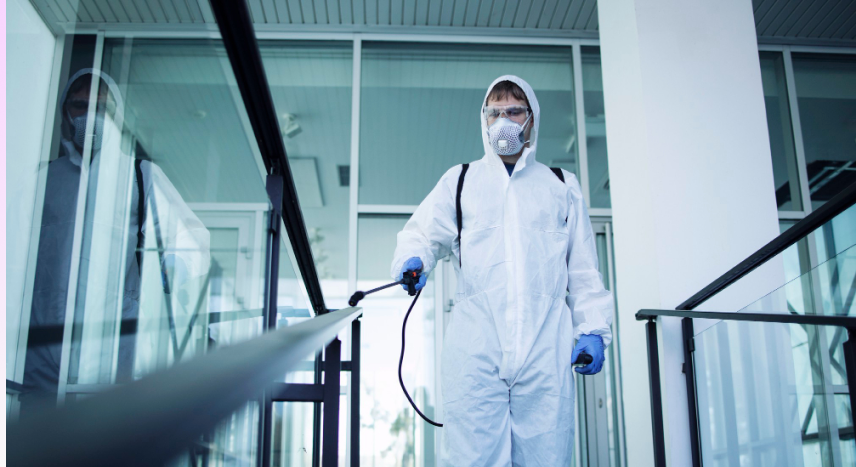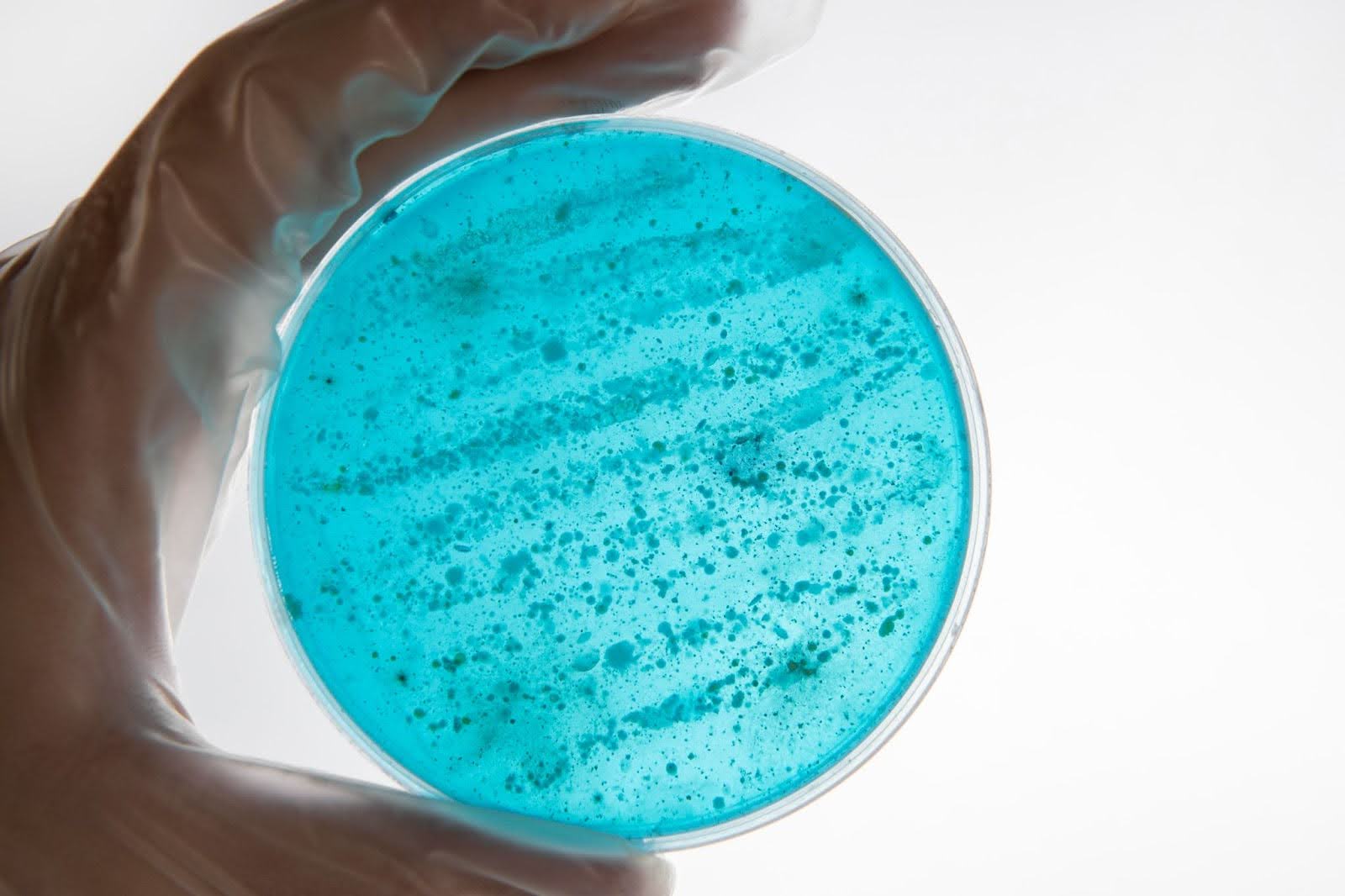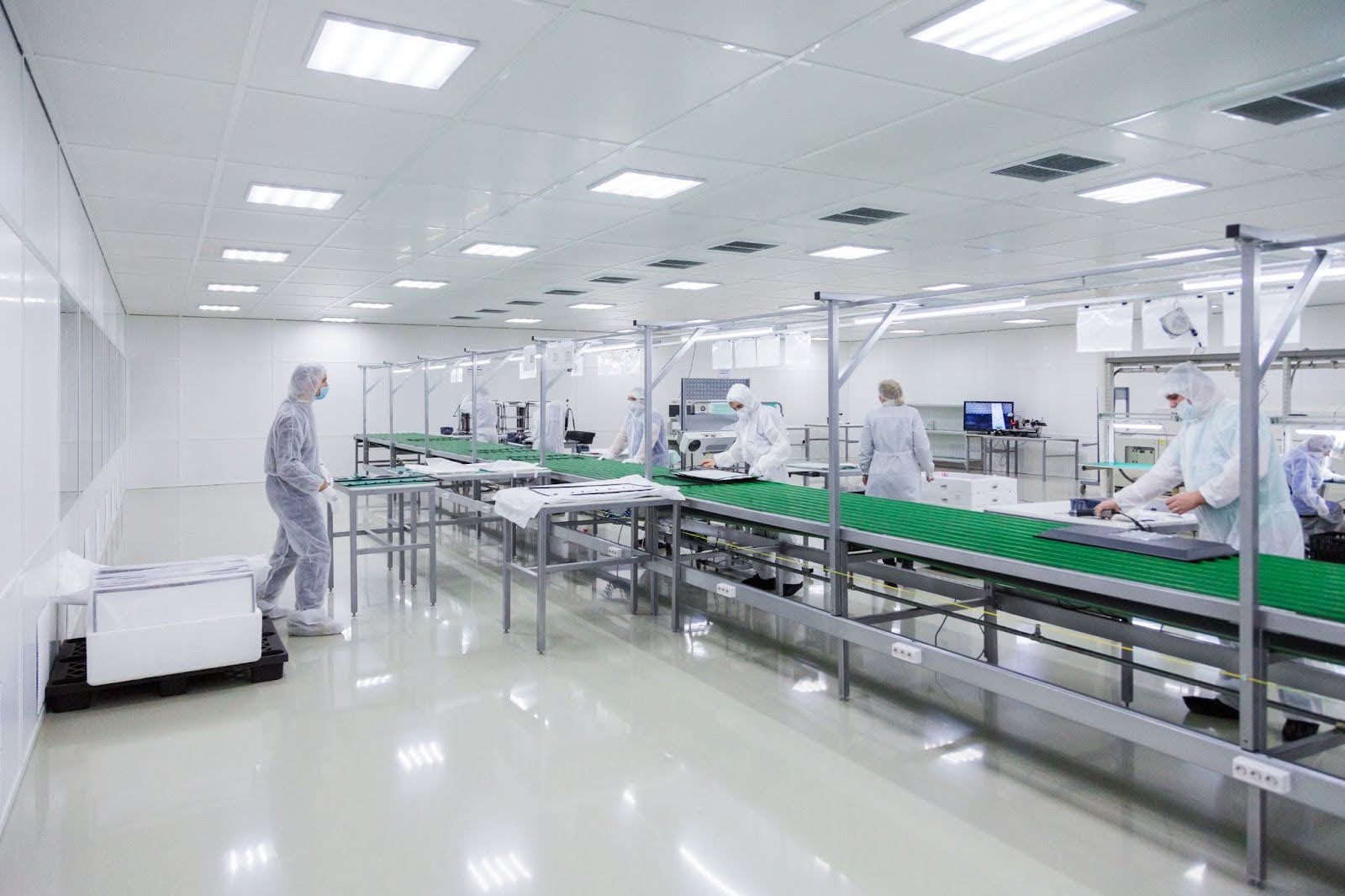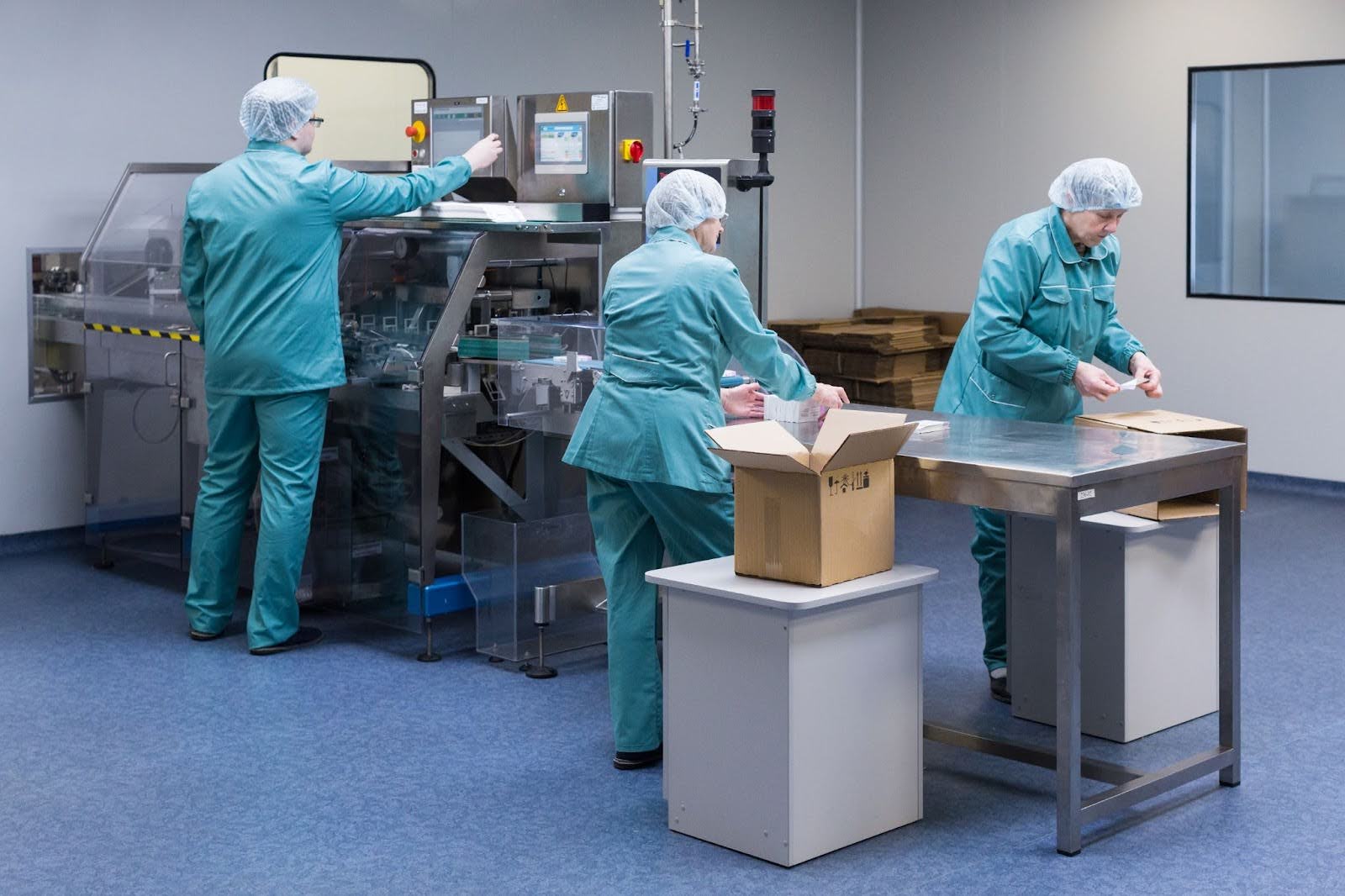by Vaibhavi M.
null minutes
Cleaning & Disinfection Programs under Annex 1 in the Pharmaceutical Cleanroom Industry
Annex 1 raises the bar for cleanroom cleaning and disinfection. Learn key compliance strategies for contamination control.

The manufacture of sterile medicinal products requires absolute control over microbial and particulate contamination. Among the many pillars of contamination control, cleaning and disinfection programs stand out as one of the most scrutinized areas under EU GMP Annex 1 (2022 revision). The revised guideline sets higher expectations for pharmaceutical cleanrooms, emphasizing contamination prevention as a proactive approach rather than reactive compliance.
This article provides an in-depth exploration of how Annex 1 shapes cleaning and disinfection practices, the technical challenges in program design, and how pharmaceutical manufacturers can align their cleanroom operations with evolving regulatory expectations.
The Role of Cleaning and Disinfection in Contamination Control
A cleanroom is only as effective as the control measures implemented within it. While air filtration systems, gowning protocols, and environmental monitoring contribute to contamination control, none can compensate for inadequate surface cleanliness. Microorganisms and particulates can adhere to cleanroom surfaces, equipment, and even operators’ gloves. Without systematic removal and biocidal treatment, these risks can compromise the sterility assurance of medicinal products.
Cleaning removes residues such as dust, dirt, and organic matter, while disinfection reduces microbial load by using agents with proven biocidal activity. Annex 1 recognizes that only a holistic and validated program, covering detergents, disinfectants, application methods, and rotation strategies, can ensure sustained contamination control.
Annex 1: Key Expectations for Cleaning & Disinfection
The 2022 Annex 1 revision reinforced and expanded regulatory requirements for contamination control in cleanrooms. Cleaning and disinfection received particular attention because contamination is often linked to inadequate surface hygiene. Some critical expectations include:
- Integration with CCS (Contamination Control Strategy): Cleaning and disinfection programs must be an integral component of the site-wide CCS, with clear risk-based justification for every choice.
- Use of Qualified Agents: Disinfectants and detergents must be selected based on spectrum of activity, compatibility with surfaces, and safety. Annex 1 specifies the need for sporicidal agents to be part of the rotation.
- Rotation of Disinfectants: To reduce the risk of microbial resistance, cleanrooms must implement rotation strategies using at least one sporicidal disinfectant.
- Residue Management: Cleaning agents and disinfectants can leave residues that may interfere with product quality or encourage microbial growth. Annex 1 requires documented removal strategies for residues.
- Validation of Efficacy: Disinfection programs must be validated under actual cleanroom conditions, including contact time, application method, and challenge organisms.
- Operator Training: Annex 1 emphasizes training operators not only on technique but also on contamination risks, reinforcing that poor execution undermines even the best-designed program.
Designing a Cleaning & Disinfection Program under Annex 1
Implementing an Annex 1–compliant program involves balancing regulatory expectations with practical cleanroom realities. The following elements form the backbone of an effective strategy:
1. Risk-Based Program Design
Annex 1 requires programs to be designed within the framework of a contamination control strategy. This means considering factors such as:
- Cleanroom classification (Grade A, B, C, D)
- Frequency of product exposure
- Environmental monitoring data and contamination trends
- Material and personnel flow patterns
- Historical deviations and contamination events
For example, a Grade A filling isolator demands more stringent disinfection cycles, sporicidal use, and residue removal compared to a Grade D support area.
2. Selection of Cleaning and Disinfection Agents
A compliant program must demonstrate that chosen agents are suitable for their intended use. Key considerations include:
- Spectrum of activity: Bactericidal, fungicidal, and sporicidal effectiveness.
- Material compatibility: Ensuring no degradation of cleanroom surfaces, seals, or equipment.
- Residue profile: Evaluating whether residues can affect product quality or cleanroom integrity.
- Regulatory acceptance: Preference for agents with pharmacopeial or globally recognized standards.
Disinfectants commonly used include quaternary ammonium compounds, hydrogen peroxide blends, alcohols, and chlorine-based sporicides. Cleaning detergents are used first to remove organic matter that can neutralize disinfectants.
3. Rotation Strategy and Sporicidal Use
Annex 1 mandates that at least one sporicidal agent be part of the disinfection cycle. A typical rotation strategy might alternate between:
- A broad-spectrum disinfectant for daily use
- A sporicidal disinfectant to be used weekly or as defined by risk assessment)
- Alcohol like IPA or ethanol for small-surface rapid disinfection
Rotation not only prevents resistance but also addresses different contamination scenarios.
4. Application Methods
Efficacy is heavily dependent on the method of application. Annex 1 expects methods to be validated under real-world conditions, including:
- Manual application using sterile wipes
- Spray-and-wipe techniques with validated coverage
- Fogging or vaporized hydrogen peroxide (VHP) for large-scale terminal disinfection
The chosen method must achieve uniform coverage, specified contact time, and residue management.
5. Frequency and Scheduling
Annex 1 does not prescribe universal cleaning frequencies but requires schedules to be scientifically justified. For example:
- Grade A/B environments: multiple disinfections per shift.
- Grade C/D: once per day or shift depending on operations
- Equipment: between product batches and following maintenance activities
Risk assessment and environmental monitoring trends guide the final frequency schedule.
6. Residue Management
Chemical residues can be as problematic as contamination if left unchecked. Annex 1 requires documented procedures for residue removal, usually through:
- Final rinse with sterile water for injection (WFI)
- Dedicated cleaning cycles with neutralizing agents
- Regular surface verification for buildup
Residues are particularly critical in isolators and restricted access barrier systems (RABS), where accumulation may go unnoticed over time.
Validation and Qualification of Cleaning & Disinfection
Validation is one of the most scrutinized aspects under regulatory inspections. Annex 1 outlines that validation must consider the following:
- Efficacy Testing: Laboratory testing using standardized methods (e.g., EN 13697, ASTM E2614) against in-house environmental isolates.
- Contact Time Studies: Demonstrating that disinfectants achieve microbial kill within the specified exposure period.
- Surface Compatibility Studies: Ensuring no corrosion, material degradation, or particle shedding occurs over repeated applications.
- In-situ Trials: Real cleanroom studies confirming that lab efficacy translates to operational effectiveness.
Validation is not static—Annex 1 requires periodic requalification and continuous verification through environmental monitoring. Any trend in microbial recovery must trigger reassessment of cleaning practices.
Common Challenges in Implementation
Despite clear guidance, many pharmaceutical manufacturers face difficulties in achieving Annex 1 compliance. Some recurring challenges include:
- Inconsistent Operator Technique: Even validated agents fail if wiping methods do not ensure proper coverage.
- Residue Accumulation: Particularly in high-use isolators where sporicidal agents are applied frequently.
- Resistance Concerns: Over-reliance on a single disinfectant without proper rotation.
- Documentation Burden: Annex 1 demands detailed logs of every cleaning and disinfection activity, which can overwhelm operators.
- Supplier Variability: Switching suppliers or formulations may invalidate previous validation studies.
Addressing these requires strong training programs, supplier qualification, and digital documentation systems.
Integration with Environmental Monitoring and CCS
A cleaning and disinfection program cannot exist in isolation. Annex 1 expects integration with environmental monitoring (EM), where microbial recovery trends inform adjustments to cleaning frequency, agent choice, and residue management.
For example, if spore-forming organisms are consistently recovered in Grade C, the CCS should dictate increased sporicidal frequency or investigation of potential ingress points. This demonstrates the feedback loop between EM and cleaning programs, a core principle of modern contamination control.
Future Trends in Cleaning & Disinfection
As Annex 1 drives higher compliance standards, the industry is witnessing shifts in technology and practice:
- Pre-saturated Sterile Wipes and Closed Systems: Reducing contamination risk from preparation and dilution.
- Automated Disinfection Systems: Robotics and VHP chambers reducing operator variability.
- Data-Driven Cleaning Programs: Integration with digital CCS and analytics platforms to predict contamination risks.
- Low-Residue Sporicides: Advanced formulations minimizing residue buildup without compromising sporicidal efficacy.
These innovations reflect the industry’s movement from compliance-driven cleaning to science- and risk-based contamination control.
Conclusion
Cleaning and disinfection remain a cornerstone of sterile manufacturing, but Annex 1 has elevated expectations beyond simple routine practices. A compliant program today must demonstrate scientific justification, validated efficacy, residue management, and integration into the overall contamination control strategy.
Pharmaceutical manufacturers that adopt risk-based design, robust validation, and continuous improvement will not only meet Annex 1 requirements but also strengthen sterility assurance and product quality. As regulatory scrutiny intensifies, cleaning and disinfection programs are no longer operational checklists—they are strategic enablers of compliant, safe, and sustainable pharmaceutical manufacturing.




